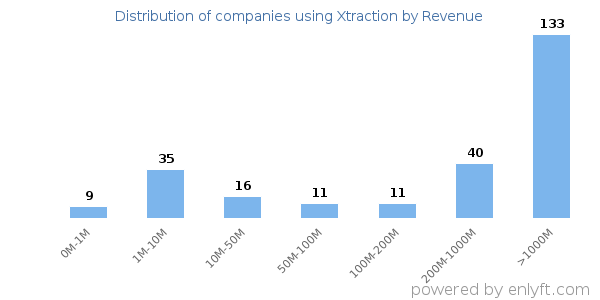Companies using Xtraction
We have data on 229 companies that use Xtraction. The companies using Xtraction are most often found in United States and in the Information Technology and Services industry. Xtraction is most often used by companies with >10000 employees and >1000M dollars in revenue. Our data for Xtraction usage goes back as far as 8 years and 3 months.
Who uses Xtraction?
| Company | Accenture PLC |
| Website | accenture.com |
| Country | Ireland |
| Revenue | >1000M |
| Company Size | >10000 |
| Company | Michael Page International |
| Website | michaelpage.com |
| Country | United States |
| Revenue | 200M-1000M |
| Company Size | 5000-10000 |
| Company | Infosys Ltd |
| Website | infosys.com |
| Country | India |
| Revenue | >1000M |
| Company Size | >10000 |
| Company | International Business Machines Corporation |
| Website | ibm.com |
| Country | United States |
| Revenue | >1000M |
| Company Size | >10000 |
| Company | Wipro Ltd |
| Website | wipro.com |
| Country | India |
| Revenue | >1000M |
| Company Size | >10000 |
| Company | Website | Country | Revenue | Company Size |
|---|---|---|---|---|
| Accenture PLC | accenture.com | Ireland | >1000M | >10000 |
| Michael Page International | michaelpage.com | United States | 200M-1000M | 5000-10000 |
| Infosys Ltd | infosys.com | India | >1000M | >10000 |
| International Business Machines Corporation | ibm.com | United States | >1000M | >10000 |
| Wipro Ltd | wipro.com | India | >1000M | >10000 |
Target Xtraction customers to accomplish your sales and marketing goals.
Xtraction Market Share and Competitors in IT Management Software
We use the best indexing techniques combined with advanced data science to monitor the market share of over 15,000 technology products, including IT Management Software. By scanning billions of public documents, we are able to collect deep insights on every company, with over 100 data fields per company at an average. In the IT Management Software category, Xtraction has a market share of about 0.1%. Other major and competing products in this category include:
IT Management Software
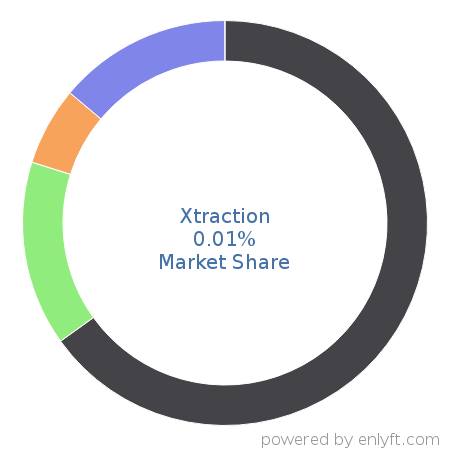

What is Xtraction?
Xtraction by LANDESK brings business intelligence to IT operations initiatives. Even non-technical users can now easily create dashboards that allow business leaders to visualize the state of their IT environment and make informed decisions to improve processes, projects, security and service levels across the business.
Top Industries that use Xtraction
Looking at Xtraction customers by industry, we find that Information Technology and Services (24%), Hospital & Health Care (8%), Computer Software (7%) and Financial Services (5%) are the largest segments.
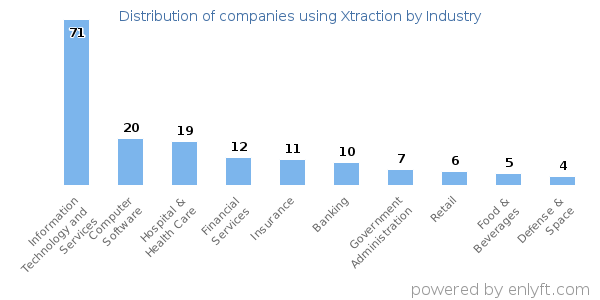
Top Countries that use Xtraction
53% of Xtraction customers are in United States and 6% are in Australia.
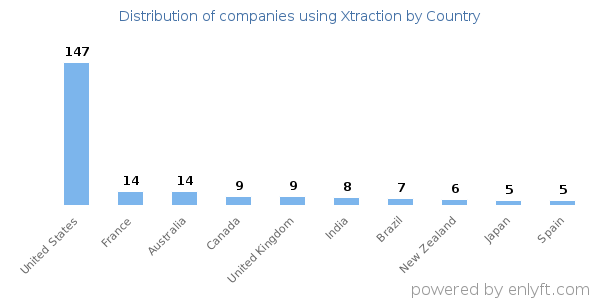
Distribution of companies that use Xtraction based on company size (Employees)
Of all the customers that are using Xtraction, a majority (60%) are large (>1000 employees), 15% are small (<50 employees) and 22% are medium-sized.
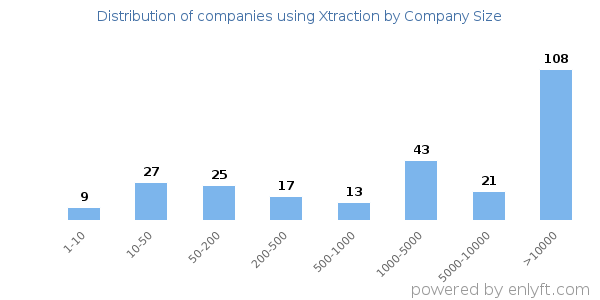
Distribution of companies that use Xtraction based on company size (Revenue)
Of all the customers that are using Xtraction, a majority (61%) are large (>$1000M), 22% are small (<$50M) and 12% are medium-sized.
